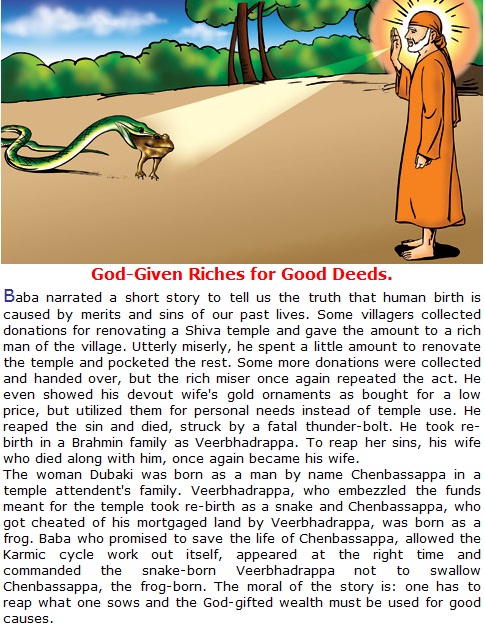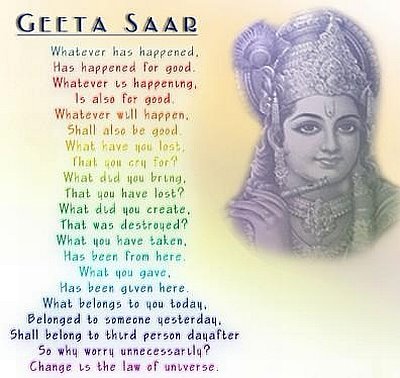Om Sai Ram
Isn't it amazing ??? If I ask this question to you or myself- the answer that most of us will reply will be NO !!!
Your age is xx yrs but have u or me visited that many amt of temples. My reply is NO and I am sure most of you will agree with me that we have been to xx number of restaraunts but not the same amt of temples ..
I hope someday I am able to say that YES, my age is xx yrs and I have payed my respects to atleast that many temples..
Deepa H
Until then lets know a little more abt this sacred Jain Temple known as Ranakpur temple
Ranakpur Temples are acclaimed world-wide for their intricate and superb
architectural style. These temples form one of the five major pilgrimages of the
Jains. Located in village of Ranakpur near Sadri town in the Pali district of
Rajasthan, Ranakpur temple lies at a distance of 95 kms in the north of Udaipur
city. The temple is easily accessible from the city of Udaipur as regular buses
are easily available. Built in the 15th century, Ranakpur temples are known for
being the largest and most important temples of the Jain cult.
The temple is said to have been built by Seth Dharna Sah (a Jain businessman)
with the aid of Rana Kumbha, who ruled Mewar in the 15th century. Ranakpur got
its name after the name of the Rajput Monarch and likewise the temples. The
temple complex is positioned in an isolated valley on the western side of the
Aravalli Range. The Jain Temples of Ranakpur are certainly creditable for their
splendid architecture. This temple is wholly constructed in light colored marble
and comprises a basement covering an area of 48000 sq feet. There are more than
1400 exquisitely carved pillars that support the temple.
The temple is a masterpiece of architecture and boasts of not less than four
additional shrines. It has 24 pillared halls with 80 domes that are supported by
400 columns. The upper and lower parts of the domes are linked by brackets that
have deities' sculptures. Above all, you would be amazed to see at a height of
45 feet engraved nymphs playing the flute in various dance postures. Each column
is intricately carved and it is surprising to know that no two columns have the
similar design.
Apart from this, another stunning act about these columns is that they change
their color from golden to pale blue after every hour during the day. In the
mandap (prayer hall), the two big bells of 108 kg each produce a harmonious
sound on the movement. Chaumukha temple is formed like a Nalinigulm Vimana
(heavenly aircraft) and provides this whole structure a celestial appearance.
Conceivably, it is due to the intricacy of the structure that the temple took
approximately 65 years to complete.
In the complex, there are several temples including Chaumukha temple,
Parsavanath temple, Amba Mata Temple and Surya Temple. Amongst all of them,
Chaumukha Temple is the most important and as the term Chaumukha suggests, this
temple is four-faced. Chaumukha temple is dedicated to Lord Adinath, who is the
first 'Tirthankara' of the Jains. The Temple structure is highly compound having
four different doorways to get into the chambers. These chambers ultimately take
you to the main hall where the image of Adinath is positioned.
The four faced image also symbolizes the Tirthankara's quest for the four
directions and ultimately the cosmos. The image is surrounded by many small
shrines and domes. One more range of cells with separate roofs encircles these
shrines and domes all over again. The five spires elevate above the walls and
around 20 cupolas rise from roof of the pillared hall. Each spire houses a
shrine and the largest shrine is the important one that addresses the central
altar. The temple ceilings are festooned with foliate scrollwork and geometric
patterns.
The Temple of Parsavanath is another attraction that is worth visiting. Built in
the mid 15th century, the temple is renowned for its engraved windows
embellished with Jain figures. Parsavanath Temple is also known as Patriyon Ka
Mandir. In close proximity to this temple, you can trace two other temples
dedicated to Neminath (22nd saint) and Surya Narayan (Sun God) respectively.
Here, Surya Narayan Temple has innumerable wall projections with circular
structure. The sight of Lord Surya driven in his chariot of seven horses is
truly pleasing.
The dating of this temple is controversial but it is largely considered to be anywhere between the late 14th to mid-15th centuries. Inspired by a dream of a celestial vehicle, Dhanna Shah, a Porwad, is said to have commissioned it, under the patronage of Rana kumbha, then ruler of Mewar. The architect who oversaw the project is said to have been named Deepaka. There is an inscription on a pillar near the main shrine stating that in 1439 Deepaka, an architect, constructed the temple at the direction of Dharanka, a devoted Jain
E.G. One's actions for today will effect what will happen to them in this or their future lives.
- Ahimsa - To protect all life (non-violence)
- Satya - To speak truth
- Asteya - To not steal
- Brahmacharya - To not commit adultery
- Aparigraha - To limit one's possessions
- Puja - Concentrating on one's soul through intense prayer sometimes in the presence of sculptures of the teachers to serve as an example of how to attain Moksha.
- Samayik - Forty-eight minute ritual that asks for forgiveness for one's sins
- Namokar Mantra - A short prayer that can be said at any time that shows obeisance to the perfect souls that have achieved Nirvana.
Namokar Mantra: Elixir Itself
Namo Arihantanam
I bow in reverence to Arihants
Namo Siddhanam
I bow in reverence to Siddhas
Namo Ayariyanam
I bow in reverence to Acharyas
Namo Uvajjhayanam
I bow in reverence to Upadhyayas
Namo Loye Savva Sahunam
I bow in reverence to all Sadhus
I bow in reverence to Arihants
Namo Siddhanam
I bow in reverence to Siddhas
Namo Ayariyanam
I bow in reverence to Acharyas
Namo Uvajjhayanam
I bow in reverence to Upadhyayas
Namo Loye Savva Sahunam
I bow in reverence to all Sadhus
Eso Panch Namoyaro
This five-fold salutation
Savva Pavappanasano
Destroys all sins
Mangalanam Cha Savvesim And amongst all auspicious things
Padhamam Havai Mangalam Is the most auspicious one
This five-fold salutation
Savva Pavappanasano
Destroys all sins
Mangalanam Cha Savvesim And amongst all auspicious things
Padhamam Havai Mangalam Is the most auspicious one
The
ultimate power of a Mantra uttered in words and meter depends on the one who
recites it, his feelings at the time and the place where it is recites. However,
the Namokar Mantra while it controls our behaviour pattern and destroys our sins
(Karmanashak), upon being recited increases our inner spiritual strength. It
releases us from crisis, and it generates our well-being. Jain scriptures tell
of its endless magical manifestation: A dog who was about to die, heard the
Mantra recited by Jeevandhar and became a handsome Yaksha. A pair of serpents
heard the Mantra recited by Parshva Kumar and metamorphosed into Darnendra and
Padmavati. A bull while in physical agony, heard the Mantra recited by Seth
Padmaruchi and in his next life became Prince Vrishabhdhvaj - the same prince
was known as Sugriva later on. The nobleman Dhananjai's son dying from snakebite
heard the Mantra and regained life. Anjan the thief running from sure death
learnt this Mantra and became a learned man. Aj while dying patiently heard the
Mantra recited by Charudutt and reached heaven. There are endless legends about
the power of this Mantra. The one who recites this sure Mantra with real faith,
scales the heights of the everlasting pits of hell. In this context it would be
well to recall Suhom Chakravarti's fate.
May we all learn from the teachings and beliefs of Jainism and make our souls pure and sacred so that it is ready to become one with God.


















No comments:
Post a Comment